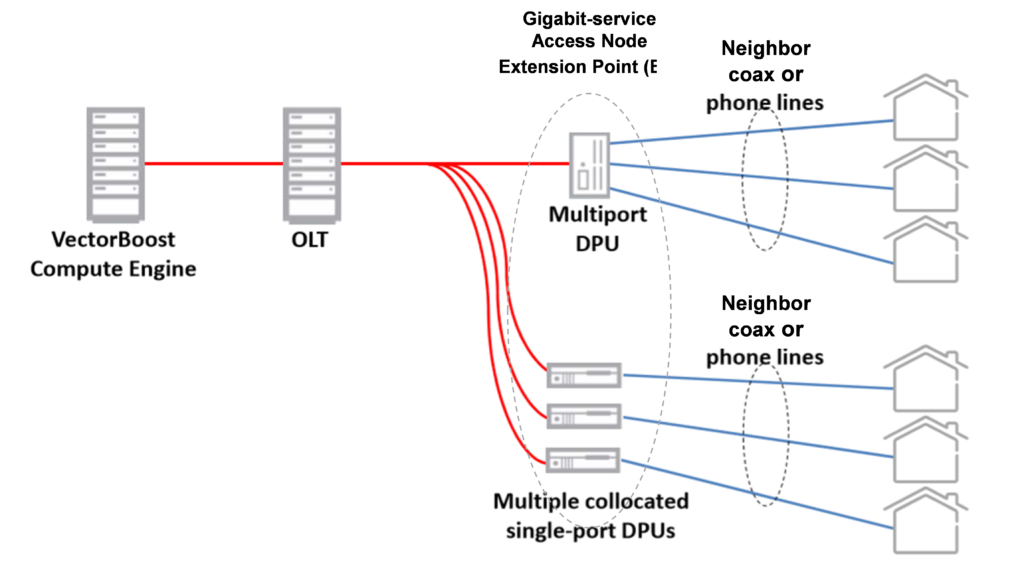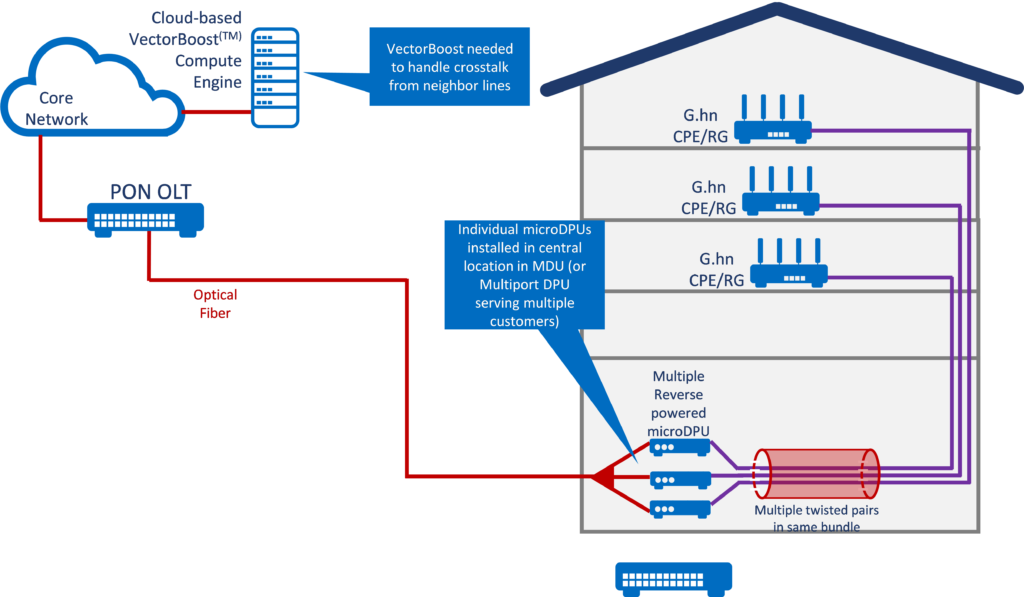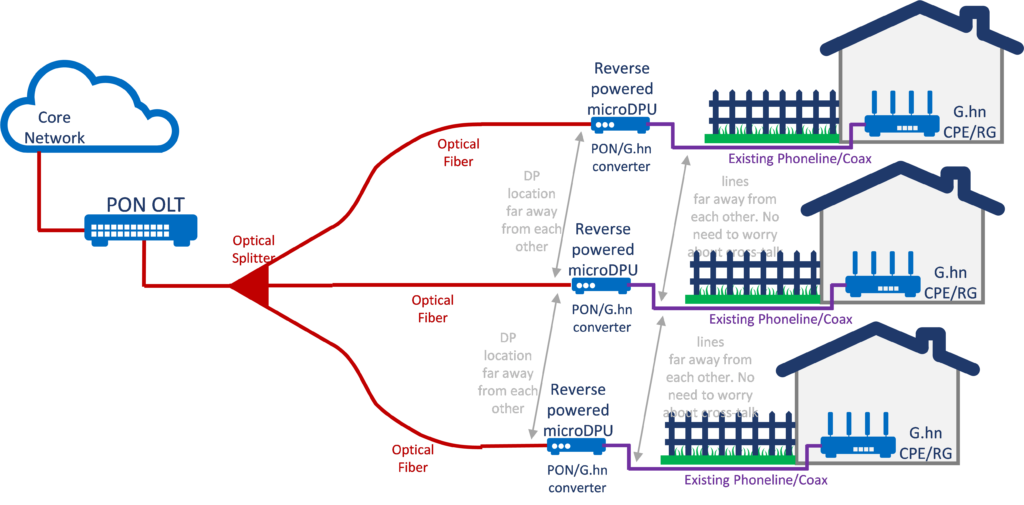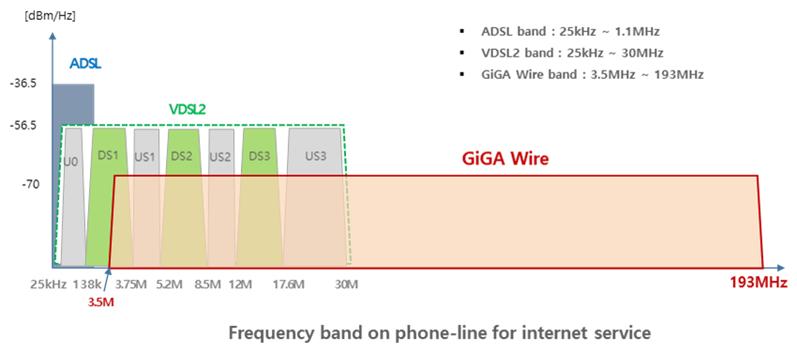Chair

Paul Arola is Chair of the HomeGrid Forum GiGAWire Task Force and Senior Design Specialist at TELUS
Overview
GiGAWire™ is the broadband access network solution based on the ITU-T G.hn standard. It is well-known that G.hn supports broadband connectivity within the home. However, applicability of G.hn technology can be extended to the Multi Dwelling Units (MDUs) environment, including large apartment complexes and office buildings, as well as Single Family Units (SFUs) scenarios by using the GiGAWire™ profile. It provides crosstalk mitigation and auto pairing features to support multiple users using bundled cables.
With the GiGAWire™ solution, service providers can leverage G.hn technology through existing wires to cost-effectively provide last mile infrastructure in areas where optical fiber cannot be deployed all the way to the customer premises. G.hn deployment options are capitalizing on complementary architectures to extend fiber networks with phoneline and coax-based Point-to-Point (P2P) and Point-to-Multipoint (P2MP) infrastructure and topologies.


Network Topology
GiGAWire™ meets the demand for gigabit home networking services and enables reliable next-generation networks. It is a critical component of the global effort to adopt the FTTep (Fiber to the extension point) architecture (Figure 1) and accelerate the deployment of broadband services by leveraging existing copper infrastructure (Figure 2 and Figure 3) to extend fiber-based services (Figure 4) into the premises.

Figure 1 – FTTep (Fiber-to-the Extension-Point) architecture



Network Configuration
For GiGAWire™ services, a GAM (G.hn Access Multiplexer) is needed in the basement of building complex or in the communication room, and a GNT (G.hn Network Terminal) is needed in each household. The GAM provides from 1Gbps to 10Gbps broadband WAN interfaces (e.g. xPON). The GNT provides typically 1Gbps Ethernet towards the LAN and any other additional interface that is required for the expected service (e.g. POTS).
Key Features
GiGAWire™ technology key features:
- ITU-T G.996x standard based, designed to operate over legacy copper wiring (data-grade twisted pair, phoneline or coax)
- Recognized as a critical component of the global effort to adopt the FTTep (Fiber to the extension point) architecture and accelerate deployment of the next-generation access networks that deliver multi-gigabit broadband services and a gigabit reliable experience to millions of users.
As a derivative of the ITU-T G.hn family of Recommendations (G.996x series), GiGAWire provides:
- A physical layer (PHY) implementing ITU-T G.9960 Physical Layer:
- Up to 2 Gbps physical data rate
- LDPC Forward Error Correction (FEC)
- Windowed OFDM (Orthogonal Frequency Division Multiplexing)
- QAM modulation up to 12 bits per carrier
- A Data Link Layer (DLL) implementing ITU-T G.9961:
- Synchronized MAC architecture (TDMA + CSMA)
- ACK-based selective retransmissions
- AES128 encryption algorithm
- Low power modes
- Priority and parameter based QoS
Frequency Band Plan
The GiGAWire™ transmission frequency band complies with ITU-T G.9964 as shown in the figure below. Even though the GiGAWire™ frequency band overlaps with VDSL (i.e., 3.5~30MHz), its transmission power level is low (i.e., -70dBm/Hz), so it does not affect the legacy VDSL service whose transmission power is much higher (i.e., -56.5dBm/Hz). GiGAWire™ also provides a frequency notching function for co-existence with other services.

Additional Resources
GiGAWire VectorBoost GitHub Repository
GigaWire presentation showing topologies and profiles
White Paper “Using G.hn in Access networks”
https://www.itu.int/dms_pub/itu-t/opb/tut/T-TUT-HOME-2015-PDF-E.pdf
ITU-T Standardized
List of ITU-T Standards and Whitepapers
